"We don't understand how a single star forms, yet we want to understand how 10 billion stars form." -Carlos Frenck
When we look out into the distant Universe, we're also looking back into the Universe's past. The farther away an object is, the longer it's taken its light to travel from it to our eyes. And each time we observe something farther away than anything we've seen before, we're looking farther back into the past -- closer to the Big Bang -- than ever before.
The earliest thing we've ever been able to see -- of course -- is the Cosmic Microwave Background, or the leftover glow of radiation from the Big Bang. When we observe this radiation background, which was emitted when the Universe finally cooled to low enough temperatures that neutral atoms could form, we're getting a snapshot of the Universe as it was from when it was only 380,000 years old!
But there is a theoretical prediction of the Big Bang that comes from even earlier times; it is perhaps the earliest testable prediction we have about the Universe!
The Big Bang not only tells us when we should form atoms for the first time, it tells us what types of atoms we expect there to be.
How so? Let's take you back to the earliest times we can speak of where we still have near-100% confidence in our physics.
Remember that the Universe is expanding and cooling now, which means it was hotter and denser in the distant past! Sure, when the Universe was less than 380,000 years old, it was too hot to have neutral atoms, but what if we go to even earlier times?
At some point it was too hot and dense to even have nuclei, and at some even earlier point than that, the Universe was too energetic to even have individual protons and neutrons! Back when the Universe was a tiny fraction of a second old, all we had was a sea of quarks, gluons, leptons, antileptons and ultra-hot radiation, swirling around in the primordial soup of the Early Universe!
In this state, everything collides extremely rapidly, and is in thermal equilibrium. Creation and annihilation of particle-antiparticle pairs happens rapidly. However, nearly all of the particles in existence here are unstable! As the Universe expands and cools, the heavy leptons and quarks decay away, the excess matter and antimatter find one another and annihilate, and the leftover quarks (up-and-down, in roughly equal amounts) cool down enough to condense into individual protons and neutrons. By time the Universe is about 10 microseconds old, protons and neutrons exist in roughly equal numbers.
However, the Universe is also filled with electrons and anti-electrons, better known as positrons. Every time a proton collides with an energetic-enough electron it produces a neutron (and a neutrino), while every time a neutron collides with an energetic-enough positron, it produces a proton (and an anti-neutrino). Initially, these reactions proceed at about the same speed, giving a Universe whose normal matter is made up of 50% protons and 50% neutrons.
But due to the fact that protons are lighter than neutrons, it becomes more energetically favorable to have more protons than neutrons in the Universe. (See here for some quantitative notes.) By time the Universe is three seconds old and the interconversions have mostly stopped, the Universe is more like 85% protons and 15% neutrons. And at this time, it's still hot and dense enough that the protons and neutrons attempt to undergo nuclear fusion, into deuterium, the first heavy isotope of hydrogen!
But the Universe is filled with over a billion photons for every proton or neutron in it, and the temperature is still far too high to produce deuterium without it being immediately destroyed. So you wait and you wait, until the Universe to cool down enough to make deuterium without immediately blasting it apart. In the meantime, you're faced with the unpleasant fact that the neutron is unstable, and some of your neutrons decay away, into protons, electrons, and an antineutrino.
Finally, when the Universe is somewhere between three and four minutes old, the photons have cooled off enough that they can no longer blast deuterium apart faster than the protons and neutrons can meet to form it; the Universe finally passes through the deuterium bottleneck. At this point, thanks to the decays, the Universe is somewhere around 88% protons and only 12% neutrons.
Once you can make deuterium, the Universe wastes no time adding protons and/or neutrons to it in rapid succession, climbing up the elemental ladder to make tritium or Helium-3, and after that, the very stable Helium-4!
Nearly all of the neutrons wind up in Helium-4 atoms, which winds up as around 24% of the atoms, by mass, after this nucleosynthesis. Hydrogen nuclei -- which are just single protons -- make up the other 76%. There's also very small fraction (between 0.001% and 0.01%) in Helium-3, tritium (which decays into Helium-3) and Deuterium, and an even smaller fraction winding up in some form of Lithium or Beryllium, from nucleosynthesis of those rare isotopes with a Helium-4 nucleus.
But because of a combination of factors -- the lack of a stable mass-5 or mass-8 nucleus, the coolness / relatively low density of the Universe by this time, and the strong electrical repulsion of the heavier isotopes -- nothing heavier forms.
And so these are the elements that are predicted by the Big Bang. With our knowledge from the Cosmic Microwave Background, we can determine -- to incredible precision -- exactly how much Helium-4, Helium-3, Deuterium, and Lithium-7 should be around today. This prediction -- the initial abundance of the light elements -- is one of the greatest predictions to come out of the Big Bang model.
After that, the Universe simply expands and cools, while the unstable isotopes (like tritium) decay into stable ones, until these atomic nuclei -- forged in the nuclear furnace of the Big Bang -- can safely capture electrons and become neutral atoms.
Of course, seeing these first atoms, and measuring their abundances, is especially challenging. Why's that? Let's take a look at what you can see if you look out -- and back -- into the Early Universe.
What we want to see are the very first atoms: the ones that exist back in the cosmic dark ages of the Universe. But this presents a tremendous difficulty.
The way we detect elements in the Universe is from their atomic transitions, which either give emission lines if the atoms are hot enough to have their electrons in an excited state drop down to a lower-energy state, or absorption lines if the atoms are in a cold/low-energy state, but there is a hot source behind them whose photons of a particular energy are absorbed.
The problem, of course, is that these "dark age" atoms are too cold themselves to emit those emission lines, and the radiation coming from behind them is too low in energy to induce these absorption lines! So again, we have to wait for gravitation to work its magic on these atoms, and to gravitationally attract enough of them into one place so that we can get to work on making something energetic enough to induce these atomic absorption features!
After enough gravitational collapse happens, the Universe becomes dense enough, in spots, to finally form stars for the first time! The regions that become densest the fastest form stars first -- as soon at 50-150 million years after the Big Bang -- while other regions remain neutral, devoid of stars, and pristine for longer.
The first problem is, when we create these first stars, the neutral atoms block the light from them, just as a thick cloud of interstellar gas can block the starlight from behind it.
So what we'd need, if we even want to see the light coming from these stars (or any light source) in the first place, is to get rid of these neutral atoms. And the way you do that is to form enough stars throughout the Universe that you -- for all intents and purposes -- reionize the vast majority (99%+) of the neutral atoms in it. Thankfully, the Universe does this all on its own, and it does this after less than one billion years.
The other problem is that once gravitational collapse happens and you form the first stars, these stars -- in very short order -- not only pollute the Universe around them with the heavier elements they create, they also destroy these tenuous light elements -- deuterium, lithium, and helium-3 -- that we'd like to measure!
So you might worry that this is a catch-22. How can we measure these first, pristine atoms if we can only measure atoms at all after a billion years of stuff has happened to pollute the atoms in the Universe?!
Well, there is one hope.
The Universe has -- although they're very difficult to find -- ultra-low-mass, isolated galaxies, like the Antlia Dwarf Galaxy, above.
In theory, extraordinarily isolated clumps of matter, whose mass totals something like only 0.0001% of our Milky Way Galaxy, may survive without forming any stars at all, and without being polluted by any nearby post-stellar mass, for well over a billion years. But if we wanted to find one, we'd have to be incredibly lucky.
Well, world, we've just had the stroke of luck we were hoping for.
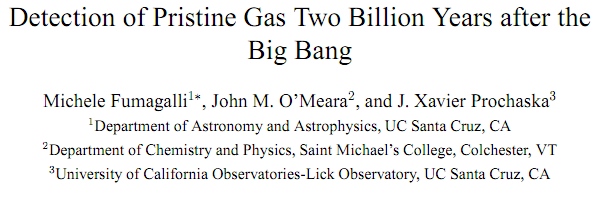
Image credit: This new paper by Michele Fumagalli, John M. O'Meara, and J. Xavier Prochaska, retrieved from arxiv.org.
The brightest, most luminous objects visible in the farthest reaches of the distant Universe are quasars, a good number of which are visible right at the very end stages of reionization -- when light becomes transparent to matter -- in the Universe. In a serendipitous stroke of good luck, after 58 years of quasar spectroscopy, the above team of Fumagalli, O'Meara and Prochaska found two clouds of pristine, unpolluted gas from the Big Bang in the spectra of their quasars!

The top part of the above image, from the Fumagalli et al. paper, is the actual quasar spectrum. That zigzag pattern, everywhere you see a downward dip, is the signature of an absorption line! In this particular case, the absorption lines show a pattern characteristic of a cloud of neutral hydrogen gas at a redshift just slightly greater than 3, or about a time of 2 billion years after the Big Bang. (And about 1 billion years after the initial light left this quasar!) However, the accompanying "pollutant" elements normally found as evidence of prior stars -- Carbon, Oxygen, Silicon, etc. -- are all not only absent, there is less than 0.01% of the amount found in our Sun. (That's an upper limit.) Keep in mind, the next most-pristine gas cloud we've ever found in the Universe has at least 0.1% of the heavy elements found in the Sun; that's a lower limit.
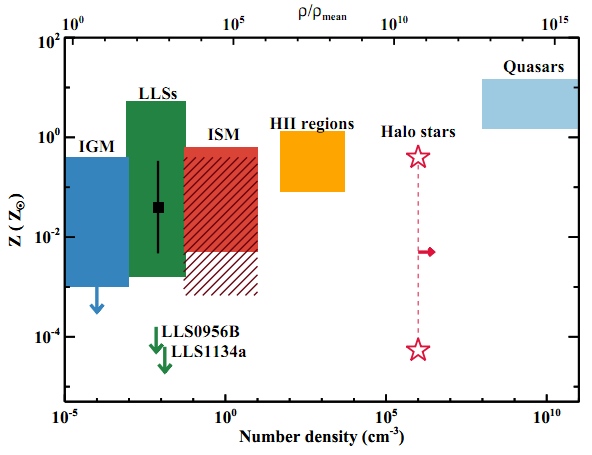
So this is not only the least polluted, most pristine sample of atoms we've ever found, it's also the newest, best test we've ever conducted as to whether the abundances of these light elements -- from the strength of their spectral absorption lines -- matches up with the predictions of the Big Bang!
The results? Have a look at the most pristine, left-most point on the graph below; it's the most trustworthy data ever taken on this topic!
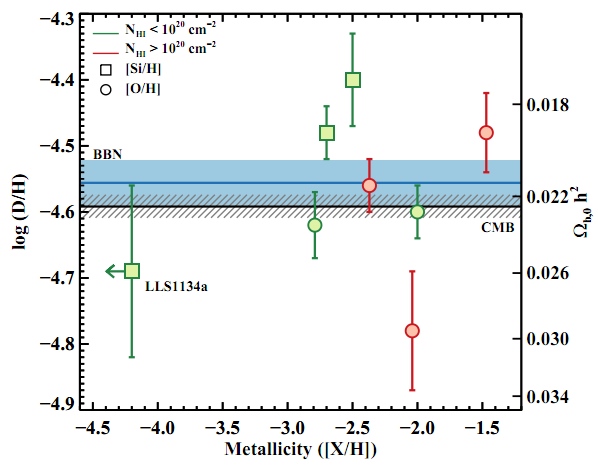
As the paper itself states:
For quasar sight lines, the measured log(D/H) = −4.55 ± 0.03 translates into Ωb,0h2(BBN) = 0.0213 ± 0.0010, which is fully consistent with the value inferred from the Cosmic Microwave Background (CMB) power spectrum Ωb,0h2 (CMB) = 0.02249 ± 0.00057. This excellent agreement between two essentially independent experiments stands as a marked triumph of the Big Bang theory.
The best part? If we want to measure the elements found in these gas clouds better, all we have to do is observe them for longer amounts of time! Yes, we might get lucky again and find even more of these pristine gas clouds (the rule-of-thumb is: if there's one, it might be a fluke, but if there are two, there are probably many), but even if we don't all we have to do is look more and more precisely at these quasars, and we can untangle the abundances of the elements found here to ever greater precision!
And that's how we found the very first atoms in the Universe, and how they -- yet again -- proved another prediction of the Big Bang correct!

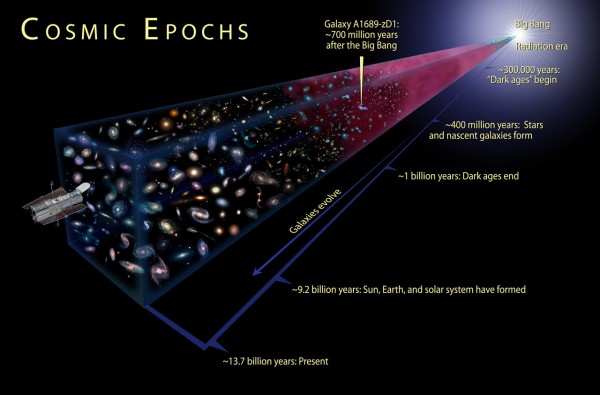

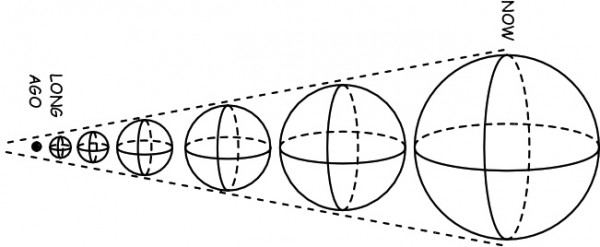
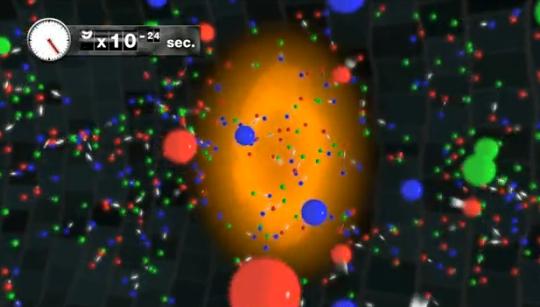
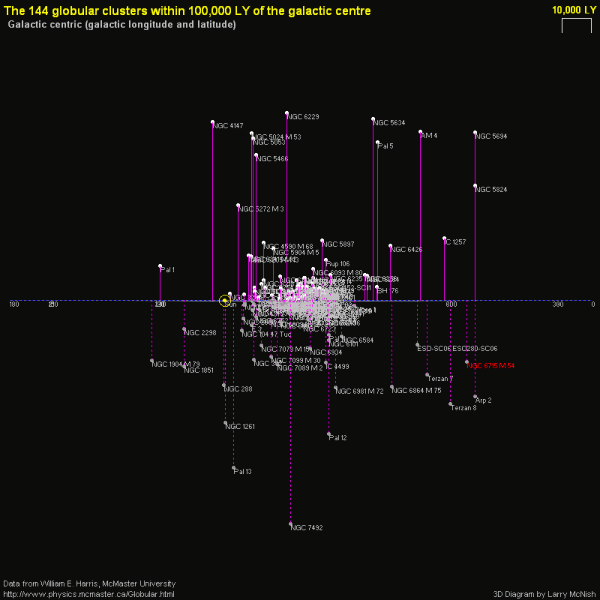
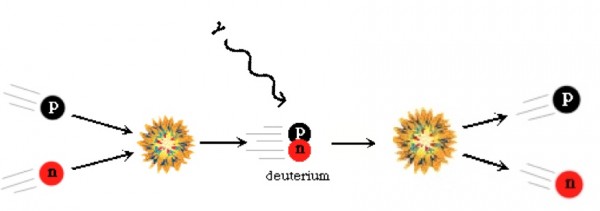

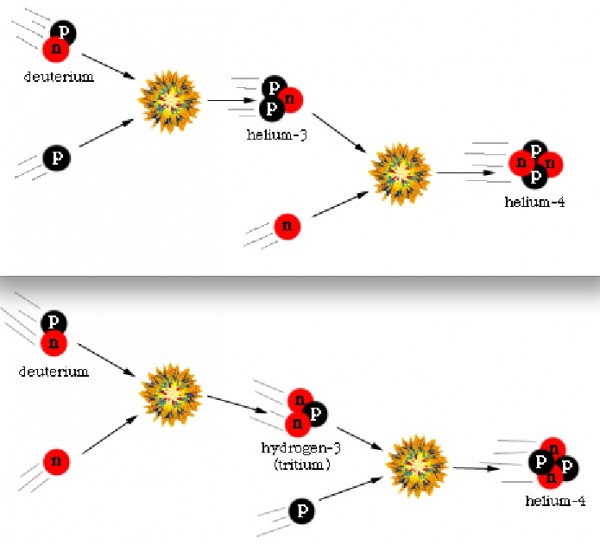
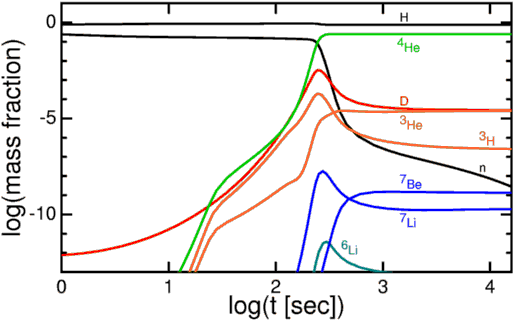
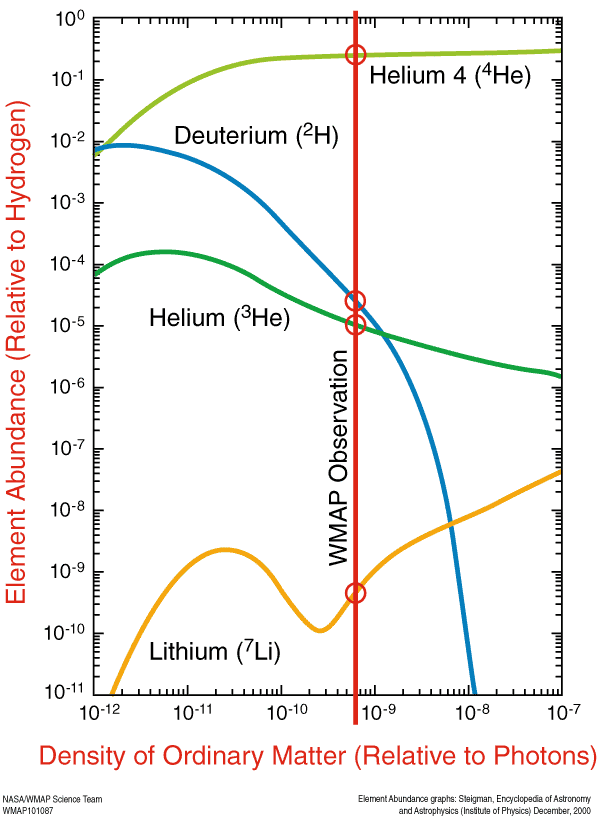
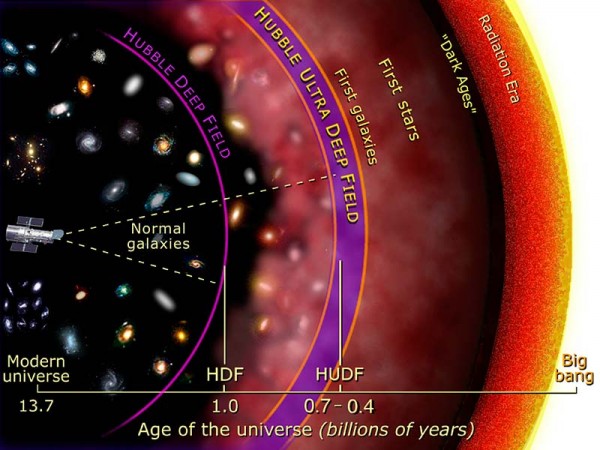

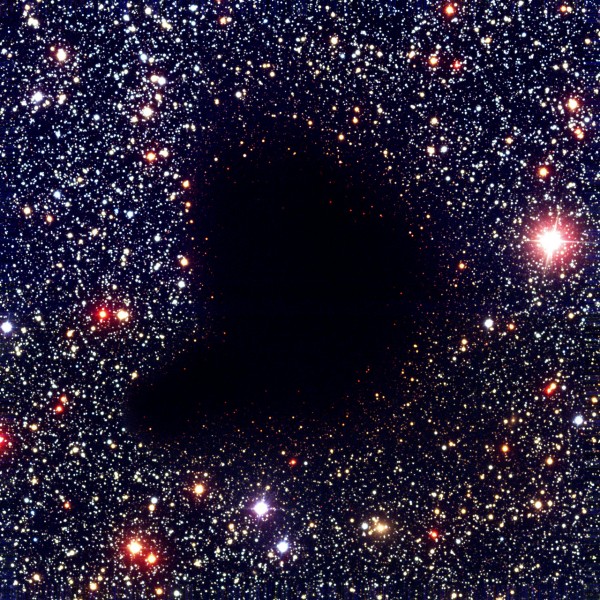
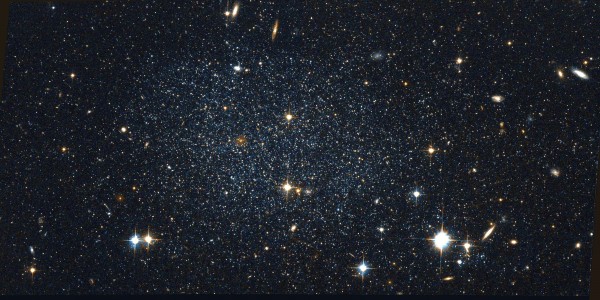
w00t!
Nice post!
Amazing work. And another huge score for the Big Bang Theory.
very cool stuff! I mean, hot...
Just wondering now, where you said:
And in conjunction with your recent post about variable not-quite-constants, could there have been stable A=5 or A=8 nuclei with a different fine structure constant? I would expect not just from the few ppm differences that were discussed in that article, but maybe given arbitrarily different α.
And now that I'm thinking of that, I'm also wondering (probably more relevantly) how that might affect the Lyman-alpha forest. That, I could imagine being affected by a few ppm delta.
Your story of the big bang is well told and the best current working hypothesis.
The observations of the Antlia Dwarf Galaxy are excellent science.
But I am continually amazed at how the proponents of the big bang theory leave critical information out. The title of the paper is "Detection of Pristine Gas Two Billion Years after the Big Bang" The paper says, "In fact, models and numerical simulations show that ejecta from this ï¬rst stellar population can enrich the interstellar medium (ISM) of the host halos up to â¼ 10â3 Zâ and pollute the surrounding intergalactic medium (IGM) as soon as 1 billion years after the Big Bang (z â¼ 6)." The article says, "The spectrographic analysis of the pristine gas clouds places them in time at about 2 billion years after the Big Bang, or nearly 12 billion years ago."
OK kuddoos and all that.
But no one mentions that the Antlia Dwarf Galaxy is only 4.3 Million lightyears away. The Antila Dwarf Galaxy is within or just a wee bit outside the local group of the Milky Way. So????
Ethan finished his recent Heavy Metal Universe post by saying, "don't be surprised that the distant Universe is full of heavy metals, evolved stars, or massive galaxies."
So, my expectation was that such low metal galaxies, dwarf galaxies, stars would be found only in the distant universe and only if our telescopes can see clearly enough.
For emphasis Ethan said, "Add just one more reason to the list of why we need the James Webb Space Telescope!"
OK, but now we "unexpectately" find that the Antila Dwarf galaxy has not been mixing; it has been sitting not interacting for 11.7 Billion years in the local group of the Milky Way!!
My skepticism about the big bang is based on the fact that there are no differences between local galaxies (and dwarfs, globular clusters, stars and groups) and distant (fossil) galaxies.
My conclusion from this new observation, "don't be surprised that the local Group of the Milky Way and the Universe (near and distant) is full of "unexpectately" low metal gas clouds that could potentially any day coalesce into low metal nearby stars (if it is possible for such stars to form). This is just one more reason to add to the list of why we need the James Webb Space Telescope!"
So I ask the same question which was unanswered in my comment @19 of the Neavy Metal Universe post, "So, is there a spectral or structural difference OBSERVABLE (with today's telescopes) between an early galaxy and a present day galaxy? Or are all of the astronomical fossils galaxies essentially identicle to some present day galaxy?"
I refer to an present day galaxy or dwarf galaxy or star or cloud of gas as being in or near the local group of the Milky Way. "The galaxies of the Local Group cover a 10 million light-year diameter " The Antila Dwarf Galaxy is only 4.3 million light years away!!
Note that the Helium in the local drugstore balloon is believed to be among the oldest atoms in the universe too!! "Most helium in the universe is helium-4, and is believed to have been formed during the Big Bang." But that is not experimental or observational evidence for the big bang; it is a conclusion of the big bang hypothesis. But we have no way of measuring the age of a Helium nucleus or an electron or a proton; unless of course it is a by product of some recent observed interaction e.g. a CERN experiment.
"Well, there is one hope. "
No! Another there is....
(casts eyes meaningfully towards where Alderaan used to be)
Randy @5, I'm not sure what it would take to make a stable mass-5 or mass-8 nucleus! In principle, I'm not entirely sure why there isn't one. For example, Beryllium-9 is entirely stable, Beryllium-7 has a half-life of 50+ days, but Beryllium-8 decays into two Helium-4 nuclei in less than 10-16 seconds! Go figure...
OKThen @6, these are the first two metal-free molecular gas clouds ever found in the Universe. They're also two of the most isolated, low-mass (~106 solar mass) clouds ever found, and although they're only at a redshift of just over 3, that is, as you note, 2 billion years after the Big Bang.
The reason I point to the Antlia Dwarf Galaxy is because, although relatively nearby, it is also low mass (at about ~107 solar masses), but the oldest stars in it are only 10 billion years old. If it were able to remain truly isolated, it may have remained pristine (and unpolluted by heavy elements) until 3.5 billion years after the Big Bang or so.
It's very interesting that one of the two high-z clouds does have metals on its outskirts, at a doppler shift of just 54 km/s in a separate cloud very nearby. It is entirely conceivable that in a few hundred million years, the metals from that cloud will indeed pollute it, and ruin the "pristine-ness" of this gas. But it is, no doubt, a tremendous victory for the Big Bang!
Randy @5: I'm no expert, but I suspect that in order to get stable A=5 or A=8 isotopes you would have to adjust α by so much that something else will break (e.g., you get a stable He-2 nucleus). The reason there are no stable isotopes with these mass numbers is because He-4 (the alpha particle) is such a deep local minimum. Try to form He-5 or Li-5, and the nucleus will spit out the odd nucleon. Try to form Be-8, and it will split back into two alpha particles (you can get C-12, but that requires a three-body collision, which is difficult to arrange in a universe cold and empty enough to keep deuterons around--you can do it in the helium core of a sufficiently massive star, but you don't have any such on hand at this stage).
Ethan Siegel wrote (November 14, 2011 6:49 PM):
> the initial abundance of the light elements -- is one of the greatest predictions to come out of the Big Bang model.
(Along with the standard model of particle physics).
Right on! --
experimentally falsifiable predictions (of expected result values) are made by models.
Theories, on the other hand, serve to first define the quantities (especially, how to measure their values, at least in principle) to which a model may then refer.
Just a question from a complete and utter amateur.
If there was a "Big Bang" and all things being equal, including the subatomic weight of the resulting particles, should there not be a "statistical void" at the origination point? Should not the statistical majority of "matter" be located at the "edge"? Would Science not benefit greatly by identifying this "void" and "edge"?
I guess my questions would open the discussions around the properties of "space" itself and it's possible effect on subatomic particles. This discussion is the foundation upon which the universe is built, therefore it seems that without a solid theory on the properties of space, we have a shakier theory on the backdrop build upon this foundation.
@8 Ethan
Thanks for the clarification and education.
Yes, I did misunderstand. Twice.
So if I now understand correctly
1) There is no low metalicity gas cloud associated with nearby Antila Dwarf Galaxy. I misunderstood the reason for Ethan's reference to Antila. Big oops on my part!
2) The low metalicity gas cloud IS AT A DISTANCE OF z=3. I MISUNDERSTOOD THIS ALSO. (mistakenly I thought this old gas cloud was nearby in Antila.) Thus I was double wrong YIKES, SORRY for causing confusion. I also missed (didn't read) the first article that clearly says, "The clouds, which are located about 12 billion light-years from Earth within the constellations Ursa Major and Leo, were found serendipitously during an ongoing study to characterize gas in distant galaxies."
So yes, this observation is a big smoking gun (LOW METAL GAS CLOUD AT 12 BILLION LIGHTYEARS) that supports the big bang theory.
Thus I disregard my skepticism @6 above and in the other day's post Heavy Metal Universe.
This new observation is the best support for the big bang theory to date, much better than the CMB (in my opinion). At last we have observed a fossil gas cloud in the distant universe "12 billion light-years from Earth within the constellations Ursa Major and Leo." Nice, very nice research.
Furthermore, if (with our current telescopes) we've discovered one metal free gas cloud at 12 billion lightyears and none nearby; then I think it is unlikely that the James Webb Space Telescope will discover any nearby gas clouds. But it would be very nice if the James Webb Space Telescope could find a bunch more fossil pre-star, early star, early galaxy evidence.
I do not argue with observation; this research is excellent and a very big deal in support of the big bang. Thus I must accept the big bang theory. I don't have another in my mind necessary big picture missing piece of evidence.
Yes I still have a skeptical twinge; but this low metal gas cloud at 12 billion lightyears is the sufficient missing link that I ask for. I got it.
It's very nice to be faced with a powerful piece of missing evidence. Thanks Ethan for educating me!!
@11 Actually, your question is well-taken, though perhaps it wouldn't have seemed so, before five years ago.
Speaking from a space-time perspective, there really is no "origination point" for the Big Bang. Or, if there is, it's everywhere you look. We're it. Space blew up, inflated a googolgoogolplex to the googolplex power, and now here we are.
But, extra-dimensionally speaking, from what I understand, this might not quite be the case. That is, some extremely sensitive instruments, following a theoretical hare down a rabbithole, have "seconded" (not proved) the possibility that the Universe as we experience it may be a holographic projection from some deeper underlying two-dimensional random template!
It's 99% conjecture at this point, but I would think that, within the scenario described above, there might well be origination points, voids, an outer edge, and all the other rigamarole described in your post -- just not here in this perceptible Universe!
@13
The theory of "holographic projection" actually plays quite well to my questions. From a "physical standpoint", our space-time reality could be a manifestation of the "holograph" being projected against the "edge" that I mention.
I guess the questions, in my own mind, arose from a perceived "inconsistency" in the Big Bang theory with our knowledge of mass, acceleration, thermal dynamics, gravity, etc. Sometimes it seems science provides complex theories that are inconsistent with more basic theories without a revaluation of those basic theories. Obviously scale matters here, but there still seem to be significant inconsistencies that get thrown into the bucket with the space-time debate.
Again, this leads me back to the primary question of "What are the properties of space?"
Too often is the "perspective of time" inserted into this question. Time itself is perspective, defined by our current theories around the "properties of space". Therefore the "properties of space" continue to be the foundation of the "answer". It may be an answer that is not knowable.
Another cool article.
I am very grateful about the detailed explanation of particle creation/interaction and timeline of the early Universe, but there's something missing and I'm having trouble finding any answers. It's about Dark Matter. It seems that the BB model makes very precise and detailed predictions. From reading the article the whole BB seems like a well organized puzzle. Predictions meet the observations and all seems to perfectly go together. So where is DM here? Seems that in the above timeline and interactions there's no place for DM. Can someone give at least a hint at how it fits into all this? Assuming that it's some sort of quark thing or lepton thing, shouldn't it then mess up the above math?
Wonderful article and the illustrations make it nearly perfect ;)
Keep up the good work of explaining such topics from the frontier of our scientific abilities in such understandable words!
The "Big Bang" theory as it stands today is insufficient, in my mind, to adequately explain the numerous inconsistencies that we find concerning space-time, mass, acceleration, etc.
Is it not possible that the "Big Bang" is actually the "Big Wave"? An event that is still happening to this day.
Let's postulate for a moment the possibility that the foundation of the Cosmos is not space but anti-space. The Big Bang may be but the initial event for the formation of not only matter, but of the very fabric of space itself. Could not the "event horizon" be the "creationary wave" that is weaving space and matter while expanding at an exponential rate that falls outside of the laws of known physics? Time, a subjective perspective based on the theoretical properties of space, would therefore be "moving" in a direction inverse of the "event horizon". Essentially placing the "older" matter closer to the "center" and "younger" matter further from that same "center". This also means that our "perspective" of time would be inverse to the physical realities of an ever growing space. In essence space would grow "outward" while time would grow "inward", due to it's being a perspective quality directly in inverse proportion to the amount of space from any given point.
The Big Bang fits as being the initial catalyst for creation, however does not fit quite as neatly for being the event for all creation.
The Big Wave theory fills in many inconsistencies, to my mind, and also explains why it would be physically impossible to either see or visit the "event horizon", we would not only have to travel "back in time", but would have to travel "back in pre-time" to outpace the "event horizon". In addition this expansion of the fabric of space would necessarily explain the fact that the Universe is expanding at an ever faster rate.
Obviously my premise cannot be fully explained within a single post and likely has enough "holes" to be laughable at best. It's just a thought from a complete novice.
Go back to the archives and October's "Why We Think There's A Multiverse, Not Just Our Universe" post, and you may find some of your questions answered, or if not answered then sketched out a little more fully.
I'm not sure I really grasp what you're driving at, with creation waves and old and new matter. I had a similar concept -- at least on the surface -- which Ethan disposed of handily, a month or so ago.
My idea was that when the acceleration of space reaches the Big Rip point, that could be the creation event, which might resemble -- seen from the other end -- a Big Bang, but which would be more like a wave front re-energizing itself.
The problem with this is that the Creation Event TOO MUCH resembles a Big Bang. As a matter of fact, there's no getting around the fact that the Universe appears to have come out of an infinitely small point, and it's no trick of perspective.
Other points that you make, about anti-space, for instance -- which seems to be a rough corollary of the False Vacuum Ethan talks about in the Multiverse post -- can likewise be disposed of by getting a firmer grasp of the specifics and the implied laws and conditions, of the subject under discussion.
@18
Jack,
I am in the process of reading the archives, thank you for pointing me to direct archive posts that are relative to my post.
I have always had an obsession with the theoretical physics behind "creation". I cannot explain why this particular article has inspired me to begin formulating a "premise" that expounds upon the current "Big Bang" theory, in my own mind. I will also readily admit that I have neither the educational nor the mathematical background, to express my "premise" in the mathematical formulas worthy of scientific scrutiny.
That being said. There are several qualities within the "Big Bang" theory that have always bothered me. Many of the inconsistencies between theoretical physics and modern physics, are explained away by discussions of "dark matter", discussions around the fundamental properties of space and time, or the discussion of alternate spacial dimensions.
My "premise" of a creation wave (event horizon) that not only "weaves" the very fabric of space, but leaves behind the subatomic matter that is necessary for all other creation, eliminates the need for additional "mystical" theories that the "Big Bang" requires by itself.
The "Big Bang", as a singular event, requires the modification or alteration of modern physics in order to accomplish the properties that we now see present in the universe.
"The Wave" premise does not require the alteration of modern physics to accomplish. It just takes a different point of view.
I will leave my postulations for now, as I believe that this forum is not the place to formulate such premises.
On the contrary, I think this forum is just the place for formulating premises -- as long as we're not repeating ourselves (see the climate change threads for infinite repitition of POVs and ideas).
You seem to have a beyond-layman's insight into creation theory and the underlying issues of cosmology. If what you say is accurate, and you really haven't studied it, then you've jumped ahead to ideas that took me fifty or so books to arrive at.
But physics is a profession that's become highly specialized, the past several generations (like everything). If you're serious about developing your interest in it, I'd suggest getting some courses from the Teaching company. Alex Filippenko, Sean Carroll, and James Gates have some excellent lectures available there at current dirt-cheap prices, and there are several others probably just as good likewise on the Teaching Company roster.
Get Brian Green's books and read them, and catch his astronomy/physics programs on PBS -- he's currently in the middle of a three-part series on string theory that's very interesting. Lisa Randall is another physics specialist/cosmologist you can see occasionally on Charlie Rose's show, or on C-SPAN.
It's a big physics world out there, beyond STARTS WITH A BANG. But it doesn't hurt to study the archives here, either, because Ethan has insights and info here that I haven't heard anywhere else.
Good luck on your studies -- it's a voyage that (happily, in this case) never ends.
OKThen @12,
I just want you to know that I have tremendous respect for what you just did, there. It reminds me of one of the best science quotes I've ever heard:
Kudos to you for helping make my day by getting it. If every self-proclaimed skeptic finally accepted the extraordinary claims when presented with extraordinary evidence, we would all be better off!
@20
Jack,
Let me go one step further in my "premise".
Current quantum physics and modern physics attempt to define the universe within "definable" limitations.
In order to "balance" these equations both quantum and modern physics must "invent" matter and alternate "spacial realities", in order make the "math" work.
Within the framework of a "Big Wave" where the possible values of "matter" are infinite, and the mathematical impact of "space-time creation" are also infinite, would that not also alter our perception of reality from a "finite reality" to an "infinite continuum" which opens endless possibilities? It also makes the math much easier.
Within the realm of galaxy expansion this premise could account for the accelerated expansion of the universe simply by the mechanics of spacial displacement. As more space is created, the process of that creation creates a force which explains universal expansion within an exponential equation.
(I wish I had the mathematical background to be able to test this premise mathematically.)
@ 22 - Here is where some of my own Teaching Company CDs may come in handy. One of the things I learned from them is to be wary of equations describing the physical universe that yield an answer that's "infinite." Infinite is like a sign you're barking up the wrong tree, or have made a mistaken assumption.
Even when we assume infinity, it can still be expressed by an integer, 10, in an unknown set of infinities (10 to the googol power?). So there's that to think about, if the human mind can remain unboggled by it.
One other way to think of your "Big Wave" is as an arc of creation, more like a series of firecrackers than a wave, with inflation falling out of a false vacuum, generating a series of universes. From this POV, I think it might be valid.
The other thing you mentioned, matter displacing space, creating an expanding Universe, is also known as the Steady State Theory. I have almost come to regard bringing Steady State into cosmology as being the moral equivalent of coming up with a mathematical infinity in solving an equation -- it's a default position, and I'm suspicious of it. It may be proven right, or appropriate, on some level. But I'd have to see the proof before I'd believe it.
Here is a question Ethan, maybe you already have a post on it.
When we point an instrument towards a point in the universe, how do we know that the signal we observe is from such and such time?
and related
How do we know that the oldest stars in the Antlia Dwarf Galaxy are only 10 bilion years old.
The speed of light and the nearest object visible in that line of sight would be the layman answer.
And we know the age of stars by looking at the heaviest and brightest stars available. These change out of the main sequence and become giant stars, and as a globular cluster (for example) ages, the spectral classification (equivalent to the size of the star) of the stars reduce down the main sequence list OBAFGKM.
There's also redshifting for things that have enough discernible structure in their emitted spectra to be able to reliably determine the emission lines by their pattern with respect to other spectral features.
That then, along with the Hubble constant, gives you the distance to that object.
That does require accuracy of the Hubble constant and its constancy, but to best available information (it's a long walk 10 billion light years, especially if you have to drag a tape measure with you), we have that figure.
@21 Ethan
Thanks.
Scientific and personal integrity requires that we be prepared to be wrong about almost anything and everything. OUCH, OUCH if we're not Socrates!
That being said the standard hypothesis is never the only one; and probably not the one that will become the next standard hypothesis. So it is necessary to be skeptical; but not to the point of dogma. Even an amateur science minded person needs proof points that might support or break a working hypothesis. We must be willing to learn.
The gas cloud 12 billion lightyears away BROKE my big objection to the big bang. GULP, OUCH.
Arguing details would be dishonest; because my big objection has just been knocked on its can.
Yes, one CREDIBLE observation is enough.
First time, you laugh at the impossibility; then in amazement, the cicus clown rides the unicycle.
I'M AMAZED AT THIS FOSSIL GAS CLOUD 12 BILLION LIGHTYEARS AWAY.
Now my mind has turned.
Never seeing some clown ride a unicycle again; now that's the impossibility.
@ 27 Alot of people seem to want a way out of the Big Bang. Fred Hoyle, as a fairly militant atheist, didn't want to deal with the Creation Event implications of it. But what could be more Creator-ly than hydrogen atoms springing out of a cubic meter of void space every hundred years or so?
To me, you don't get to God through science, and the more we find out about the Big Bang -- that it's less a Bang than inflation falling out of false vacuum -- the less reason atheists or agnostics should find to complain about it.
Was that the reason behind your own motivation to get around it, or were you simply having trouble reconciling it with what you thought were new discoveries that might disprove it -?
@28 Jack
You can find my skeptical thinking in my book
A Critique of Pure Physics, fully readable online on google books.
Assume everything that I say is bogus or speculative at best. I have no intention of misleading anyone; my only intention is to be part of the physics discussion and to learn.
Ethan's blog is best if you want current and best physics theory.
In 5 or 10 years, I might rewrite my book. I will take into account new observations (like this 12 billion lightyear gas cloud) and new learning (I have a stack of physics books and much to learn).
Here I am focused on learning standard physics; being part of the discussion and part of Ethan's community; and not promoting my personal speculations. I am not a professional physicist.
a.k.a OKThen
Thanks. I'll check into it.
I'm simply interested, myself, in why so many highly intelligent people (including the pig-headed Fred Hoyle) were and are so resistant to the Big Bang theory -- even now, when the Big Bang is revealed to have been, at the "moment" it occurred, neither big nor a bang.
Thanks again for your response.
@30
Our strengths and our weaknesses are exactly the same things. Being pig-headed is a strength and a weakness. But let's stick with the science.
A metatheory is a general framework into which a lot of detailed theories can be plugged and accommodated with ease or with difficulty.
Cosmology has had 2 overarching metatheories:
A) steady state theories (a non-evolving universe on the largest time scales)
B) big bang theories (an evolving universe on the largest time scales)
- Both accommodate nucleosynthesis, stellar evolution, the existence of Helium, black holes, etc.
- The missing antimatter of the universe is a problem for both.
- Either theories might be improved by a new theory of quantum gravity.
- The big bang demands an expanding universe; the steady state theory reluctantly accommodates
- The big bang cannot accommodate a non expanding universe without severe contortions.
- The big bang cannot accommodate 25 billion years to evolve a galaxy or an amoeba.
BUT to the point of this post...
- The big bang demands cosmic fossils.
- The steady state demands no cosmic fossils.
Until now there have been no observations of cosmic fossils.
- A LOW METAL GAS CLOUD AT 12 BILLION LIGHTYEARS has been credibly observed.
- No such gas cloud has been observed nearby in our local group or anywhere else; thus this is a long sought cosmic fossil.
- I have to reevaluate which metatheory I choose to camp in. My other problematic biases are unimportant details now.
- Cosmic Fossils are demanded by big bang metatheory.
- A highly credible FOSSIL LOW METAL GAS CLOUD AT 12 BILLION LIGHTYEARS can not be accommodated (without severe distortion) by a steady state metatheory (i.e. a non-evolutionary cosmos).
- So I am in the big bang metatheory camp now.
For analogy, consider the two biology species evolution metatheories.
A) Lamarkian
B) Darwinian
It took over 100+ years for the Darwiniam metatheory to achieve scientific dominance.
- Darwin's field observation of birds.
- Mendelian genetics.
- The fossil record of horses (fossils of dinosaurs were not enough)
- Understanding of embryo development (e.g. human's gill slit and tail as an embryo)
- DNA analysis
All of these theories fit nicely in the Darwinian metatheory
But now today comes along epigenetics which fits into the Darwinian framework at the DNA level. But switching genes on and off due to environmental conditions (i.e. epigenetics) is quite Lamarkian. So the Lamarkian metatheory idea hasn't died; in a sense, it is now being absorbed by the Darwinian metatheory.
Similarly, the steady state universe idea won't go away (as a useful thinking perspective), e.g. various multi-universe ideas may absorb it.
Not to belabor the point, since we're in basic agreement, but wouldn't CBR (Cosmic Background Radiation/Microwaves) constitute a "cosmic fossil" of the sort you're talking about?
I see the point you're making about Steady State, how it might filter back into BB theory and combine in a new metatheory. Something like that is already happening with the idea of a multi-universe: isn't a series of universes inflating out of false vacuum (from nothing) alot like Hoyle's hydrogen atoms germinating from void vacuum every thousand years or so?
But, to me, Steady State has become much less a distinct theory, provable or disprovable in the sense that Lamarck is, than it is a default position that some of us take when we're confronted with something we can't explain.
It's "beautiful" and all that -- certainly Einstein never rebelled against it -- but there's a kind of -- searching for a word -- laziness of mind that I associate with it, which makes me uneasy when yet another version of it is pushed forward like a chess piece on a metaphysical game board.
I associate laziness of mind with intolerance, hide-boundness, and pig-headedness of the sort that has not served Hoyle's reputation well -- nor did it serve those cosmologists who claimed to be defending the castle keep of science from crusaders when they took up the idea of globular clusters being older than the Big Bang, and who did everything they could to trash the reputation of astronomers like Carl Sandage, who knew better. But that's just me, and if Steady State continues its slow resurgence in some form or another, to combine with BB/Inflation, all I can do is be suspicious of it -- not deny it.
@32 Jack
Hoyle, Burbidge and Narlikar, published A different Approach to Cosmology in 2000.
I have disagreed with much of what they say for a long time. But the value of their book is that it is one of the few places that discusses the pros and cons of current versus alternative theories. Treating both sides of the discussion respectfully.
These authors are not intellectually lazy. It takes great discipline to doggedly be the loyal opposition. Yes the steady staters were not dogmatists, any more than string theorists who haven't had any tangible success (e.g. even a new testible prediction). Both steady staters and string theorists are the loyal opposition; they offer credible (yes credible) reasoned alternatives to ponder.
Before Einstein, deBroglie, Heisenberg; physics had no loyal opposition. Many physicist thought all of great physics was complete and all that was left was to fill in the details.
Remember, general relativity was not fully accepted for almost 50 years. Even until this year, a great many physicisits thought that frame-dragging (i.e. the gravitomagnetic force) was nonsense.
Regarding the CMB, it is not a fossil. It can be observed in my back yard or yours. In every direction and from eryplace in the universe. There is no way to pin down a location, it's everywhere. Just as Helium is everywhere. But a gas cloud with a specific location; now that (in this case) is a fossil. Ever seen one like this anywhere but 12 billion lightyears away? No. Have scientist look at many gas clouds in the nearby local group and beyond? Yes.
This is really important. And my accessment, we aren't likely to find one nearby. Why? If they were nearby then chance would have favored finding one nearby much sooner than finding one at 12 billion lightyears.
Is this a credible observation. I am not in the credibility of experiment or observation business. With rare exceptions; I wait for the expert opinion. If experts say this is credible, OK. If they say wait a minute (e.g. neutrinos) I have an opinion but I can wait a few months or years.
So, in my mind the CRB is not a fossil. And as well, the CMB has been predicted and postdicted with near exactness by a great many theories. The current theory got a nobel prize. But I still said, if I am going to believe in an evolving universe over the greatest time; then I need to see some object or structure that is different near versus far. Until this observation; no one could point and say look at this observation.
Checking at Wikipedia, I see that Dr. SIR Fred Hoyle died in 2001, which was somehow twenty years beyond the expiration date I'd imagined for him. Not unsurprising, I guess, considering that the Steady State Theory was thoroughly defunct in 1980.
I don't really look upon Steady Staters as being in the same ballpark as String Theorists. String Theory at least has a mathematical justification going for it, dating back almost fifty years. Moreover, string theory is something that, to date, we haven't been able to use experiment to verify, but only to confirm a few ancillary effects.
Neither of these factors applied to Steady Staters, who mainly had Sir Fred's scientific credibility to support them (he had predicted the creation of elements heavier than lithium via the mechanism of novae), and little to no math that I've seen. In the end, the experimental justification for Steady State (the Hubble discovery of an expanding Universe-- also, of course, a justification for the Big Bang) was overthrown when knowledge of the Cosmic Microwave Background came in.
I don't know the Steady Staters well enough to say whether or to what extent their personalities entered into their resistance to the Big Bang scenario. I do know that some people have their minds made up about something so they don't have to bother with it anymore -- we're seeing the same thing on these comments pages with AGW Deniers, who seem furious at having to check and re-check some of their own values, so as to justify them.
It seems to me that someone hugely resistant to "the facts," as we came to know them, to the point where he could not give up his own point of view, but demanded that the facts accomodate it, rather than vice versa -- that's a lazy mind. That's thick, egotistical thinking. And that was Dr. Sir Fred Hoyle, or what he became in the last decades of his life.
@34
That's not my opinion of Fred Hoyle.
Hoyle also claimed that AIDs came from space, along with Legionaire's Disease, etc (as part of his investment in, er, panspermia).
Intellectuals are human beings, and can be lunkheads, too. If someone follows their own stubborn resistance to facts down a rabbithole, they become a crank - like Lubos, over at the AGW page, the other day, threatening people's lives because they disagree with his resistance to the facts.
I've been wrong about many things, but the more I find out about Steady Staters, and Fred Hoyle in particular, the more I think they're a bunch of crackpots, and a red warning light to science followers everywhere. Veddy British, as they may be (the British do love their eccentrics).
@37 Jack
That's not my opinion about Fred Hoyle or about steady staters.
My big problem with Fred Hoyle type steady state model universes is that they are not based on general relativity.
Whereas Godel's model universes do not have singularities but are based on general relativity. They are not usually considered steady state; but they are clearly not evolving like the big bang universes which all have singularities. In my mind a Godel model universe is a steady state non-evolving model universe and would not have cosmic fossils. And not having cosmic fossils; in a universe in which cosmic fossils have been observed presents a very big theoretical problem. Other than this very big problem, I like some aspects of certain Godel type universe (e.g. the one's which do not allow travel backwards in time)
Scan any chapter of my book; perhaps I too will carry the honorific title "crackpot".
OK, I'm done with this post.
I've got your book on my "favorites" list, (couldn't download it) so I'll get around to reading it soon as I get done with all these pesky screenplays.
I don't have a problem with crackpots -- in trying to be a screenwriter, when I'm in my 50s, I've got more than a touch of the crackpot to me. And some of the minds I most admire -- like Fritz Zwicky, or Carl Sandage -- not to mention the pot-smoking science popularizer himself, Carl Sagan -- have crackpot-ish qualities.
Arrogance is another story. Be anything, but don't be arrogant. However, that seems to be the last of your negative attributes, so I look forward to reading your book.
I've got your book on my "favorites" list, (couldn't download it) so I'll get around to reading it soon as I get done with all these pesky screenplays.
I don't have a problem with crackpots -- in trying to be a screenwriter, when I'm in my 50s, I've got more than a touch of the crackpot to me. And some of the minds I most admire -- like Fritz Zwicky, or Carl Sandage -- not to mention the pot-smoking science popularizer himself, Carl Sagan -- have crackpot-ish qualities.
Arrogance is another story. Be anything, but don't be arrogant. However, that seems to be the last of your negative attributes, so I look forward to reading your book.
It seems like the common starting point for a lot of things is soup.
Wow, what a nice intro to our paper! (I'm one of the co-authors). Now I know where to point folks to the front-end explanation!
Happy to answer any questions you might have about the paper/results.
Just a correction on the opening quote.
Carlos Frenck said, “We don’t understand how a single star forms, yet we want to understand how 10 billion stars form.”
In fact, scientists don't understand how a single ATOM forms.
But I tell you with complete confidence: It was our God Jehovah who formed and created all things.
That statement shows how much you don't understand.
"Jehovah" was invented by humans about 2,500 years ago.
How could a 2,500-year-old human-invented imaginary being have created the 13,000,000,000-year-old reality that surrounds us?
The whole idea is entirely absurd.
If the whole big bang process started from a single particle or atom , it should have a mass or else no such thing should exists . And If so where was it been staying all the time and how it got its structure or pattern to create a universe as big as this, if everything else was formed out of it ,I mean the space , enegry . Absence of these components soon turned out to be everything ,a bit hard to digest..Under this scenario running through science laws are quite funny .our thoughts are only within the limits of any other earthly being. Universe follows different set of rules and for understanding the actuals you should be standing in the middle of it .
How can you tell earth and other planets revolve around sun just because its at the center and has huge gravitational field ...Why can't it be, all other planets with each of its gravitational field holding the sun at the centre of solar system.....You may prove with general relativity equations from earth but are you confident enough to take it to the sun and prove it atleast theoratically ...
That means theories are not simply applicable universally if you are making it just by sitting over here in earth ....
@Xavier
"If the whole big bang process started from a single particle or atom"
- it didn't start from a signle particle or atom. Where do you get that from?
"How can you tell earth and other planets revolve around sun"
- very easy... LOOK! This isn't 1400's. You can buy a pair of binoculars for 50$ and really SEE what's going on in the sky.. not to mention telescopes, satelites, probes etc...
Actually "how can you tell..." is the answer you can find online in a matter of seconds.... surely you can do that before writing the rest of your post.
"“How can you tell earth and other planets revolve around sun”
- very easy… LOOK! This isn’t 1400′s. You can buy a pair of binoculars for 50$ "
SAFETY TIP: Do not look directly at the sun with binoculars, though.
On to the personal incredulity strawman Xavier brought in, now.
"If the whole big bang process started from a single particle or atom , it should have a mass or else no such thing should exists"
As said above, it wasn't from a single particle or atom. Why do you say it must have a mass and why do you say if it didn't, no such thing should exist?
"And If so where was it been staying all the time"
Before time began, there was no "all the time".
"how it got its structure or pattern to create a universe as big as this"
Why does it need structure or pattern to create a universe of this SIZE? A snowflake has structure and pattern and is really small.
"Absence of these components soon turned out to be everything ,a bit hard to digest."
Being able to fly in a 100 ton metal tube is a bit hard to digest. Doesn't mean it hasn't happened. You need a different metric for whether something happens or not than your digestive capacity.
"You may prove with general relativity equations from earth but are you confident enough to take it to the sun and prove it atleast theoratically …"
Sun hot.
Too hot to go there, and it's a long walk too. Maybe you think we ought to try at night when the sun is dark?
But it has been tested theoretically.
it is pretty accurate in its description of what's there.
"That means theories are not simply applicable universally if you are making it just by sitting over here in earth …."
If you were to say "necessarily universally applicable", you may have had a point.
However, there's no reason for there to be different laws of physics. So why posit some?
I have 1 Que. BigBand creat for where ?
Plz any body can give Ans.
BigBand create here big noise. Ans for u.
I'll never understand how an explosion could behave in a way to create anything. If it was in a closed space, then maybe the pressure would force things together, but even then, why would it happen in such a perfect, homogenous way?
I can understand how protons and neutrons can ram together to form a nucleus, but why wouldn't the electrons ram right into it instead of orbit around it and be held in place via a complicated dance between attraction and the conservation of angular momentum?
"I’ll never understand how an explosion could behave in a way to create anything."
Because you've given up before even trying.
If you have read this thread and still don't, then you don't WANT to understand and therefore it's pointless to try any more. Revel in your ignorance. Doesn't change the facts.
Hannibal_32,
If you're interested in actually understanding things, I'll give you a head start: the big bang is NOT an explosion, but rather a space-time expansion.
Space Is The Most Amazing Thing In The Known Universe As Humans Are Discovering Each Part Of The World By Expanding There Minds With Unlimited Knowledge.
All the above is interesting but one, it is a theory and two, it starts with an assumption that there was a universe. Of course there is no explantion of how this universe was started and the matter in it but then that would negate the theory wouldn't it?
So, we must have faith in a Supreme Being who created our world and those in it. Read the Bible
This is just too much crap to believe. You talk about gravity and you don't even have the faintest idea of what it is. You talk about quarks, leptons, and neutrinos making atoms. What made those partials. What forces caused these particals to come into being? What is the stuff that these quarks are made of? Where did or what caused these particals to attract, repel, spin, and be mathematically precise in their relationships, so precise in fact that they cannot exist if their properties very even the slightest bit. What juice, stuff, silly putty was coming out of this hocus pocus big bang. What caused the bang to start banging. Where was this primordial juice hiding be for the automatic big bang to start to bang. For every action there is an opposite and equal reaction so I guess there is a anti universe that we can see if we look past the bang. What did the big bang bang into. How did this primordial soup know there was an empty something that it could bang itself into. You and your magic "this happened .0001 seconds after the bang. Come on Mufesto time did not even exist so how can quantify anything as to when and how long when you did not have time. How much crap can you expect us to chug down. You have absolutely no proof just pure herpobolic Pooo. Give me a break. What happened to string theory now it is not in vogue. How about the vibrating poo theory? I would more believe that an invisible giant had a gastronomic blast from his butt and that started the pool theory.
Do you actually know why there are 4 forces and not 5, 6, or 700.
This is all crap.
That was all crap, Gary.
I'm sorry you're so dumb.
"So, we must have faith in a Supreme Being who created our world and those in it. "
That would be me, Chuck.
Thank me later.
I see your balance of neutrons and protons at 50% and 50% in the early stages of universal development. Then, a bit later, the balance becomes 85% and 15%.
1st Question: what purpose for the balance then "imbalance" and what 'proof(s)' do we have of this early relationship?
2nd Question: are you perhaps suggesting a type of Universal Rationale or Reasoning by the Universe and the necessity of an unexplained need for this switching from 50/50 harmony to an 85-15 harmony??? I suppose the question specifically is: Why would an 85-15 current stasis be better/worse than a 50/50 proton/neutron spread? And if the current 85/15 spread is indeed more conducive towards a stable universe, then why would a 50-50 spread be necessary?? Of course the entire display hinges on the proof(s) available to concur that this 50-50 split actually occurred to begin with. Thank You
My questions are regarding the formation of atoms: How can gravity do anything without mass? How would gravity (that needs mass to be manifest) pull all the "quarks, gluons, leptons, antileptons" to one central location in the vacuum of space?
Because all those quarks, gluons, leptons" have mass, therefore your "How can gravity do anything without mass?" is irrelevant, since there's already mass there by the time you talk of quarks et al.
And note that energy, too, distorts spacetime, leading to gravity.
thank you his helped me so much on my report